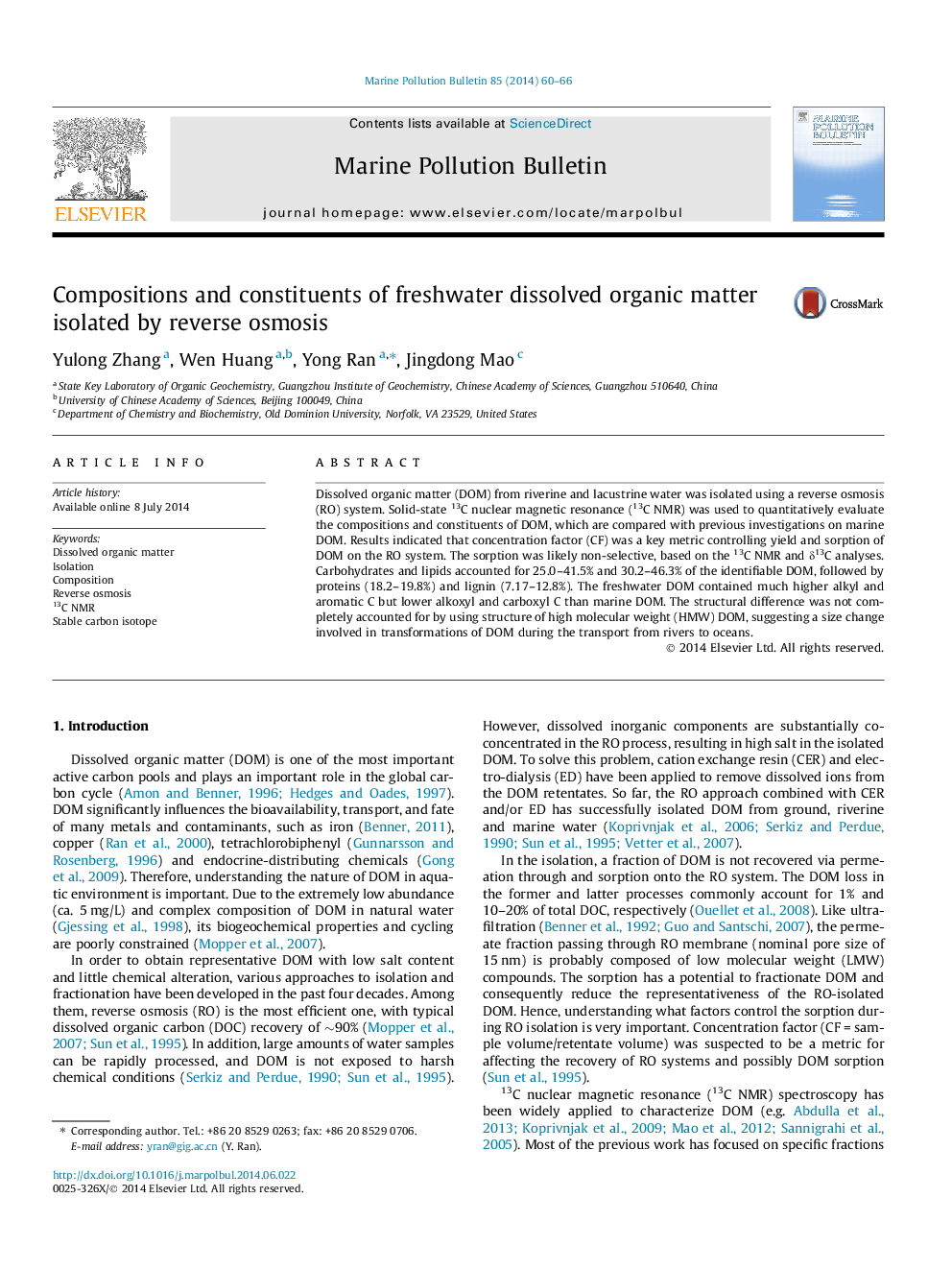| Article ID | Journal | Published Year | Pages | File Type |
|---|---|---|---|---|
| 6358155 | Marine Pollution Bulletin | 2014 | 7 Pages |
Abstract
Dissolved organic matter (DOM) from riverine and lacustrine water was isolated using a reverse osmosis (RO) system. Solid-state 13C nuclear magnetic resonance (13C NMR) was used to quantitatively evaluate the compositions and constituents of DOM, which are compared with previous investigations on marine DOM. Results indicated that concentration factor (CF) was a key metric controlling yield and sorption of DOM on the RO system. The sorption was likely non-selective, based on the 13C NMR and δ13C analyses. Carbohydrates and lipids accounted for 25.0-41.5% and 30.2-46.3% of the identifiable DOM, followed by proteins (18.2-19.8%) and lignin (7.17-12.8%). The freshwater DOM contained much higher alkyl and aromatic C but lower alkoxyl and carboxyl C than marine DOM. The structural difference was not completely accounted for by using structure of high molecular weight (HMW) DOM, suggesting a size change involved in transformations of DOM during the transport from rivers to oceans.
Related Topics
Physical Sciences and Engineering
Earth and Planetary Sciences
Oceanography
Authors
Yulong Zhang, Wen Huang, Yong Ran, Jingdong Mao,
